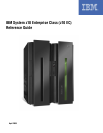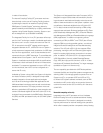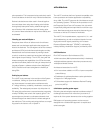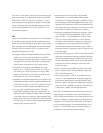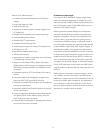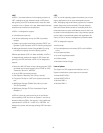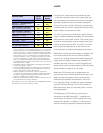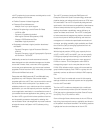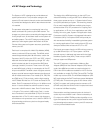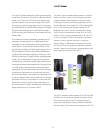In order of introduction:
The Internal Coupling Facility (ICF) processor was intro-
duced to help cut the cost of Coupling Facility functions
by reducing the need for an external Coupling Facility.
IBM System z Parallel Sysplex
®
technology allows for
greater scalability and availability by coupling mainframes
together. Using Parallel Sysplex clustering, System z serv-
ers are designed for up to 99.999% availability.
The Integrated Facility for Linux (IFL) processor offers sup-
port for Linux
®
and brings a wealth of available applications
that can be run in a real or virtual environment on the z10
EC. An example is the z/VSE
™
strategy which supports
integration between the IFL, z/VSE and Linux on System z
to help customers integrate timely production of z/VSE data
into new Linux applications, such as data warehouse envi-
ronments built upon a DB2
®
data server. To consolidate dis-
tributed servers onto System z, the IFL with Linux and the
System z virtualization technologies fulfi ll the qualifi cations
for business-critical workloads as well as for infrastructure
workloads. For customers interested to use a z10 EC only
for Linux workload, the z10 EC can be confi gured as a
server with IFLs only.
Available on System z since 2004, the System z10 Applica-
tion Assist Processor (zAAP) is designed to help enable
strategic integration of new application technologies
such as Java
™
technology-based Web applications and
XML-based data interchange services with core business
database environments. This helps provide a more cost-
effective, specialized z/OS application Java execution envi-
ronment. Workloads eligible for the zAAP (with z/OS V1.8)
include all Java processed via the IBM Solution Developers
Kit (SDK) and XML processed locally via z/OS XML System
Services.
The
System z10 Integrated Information Processor (
zIIP) is
designed to support select data and transaction process-
ing and network workloads and thereby make the consoli-
dation of these workloads on to the System z platform more
cost effective. Workloads eligible for the zIIP (with z/OS
V1.7 or later) include remote connectivity to DB2 to help
support these workloads: Business Intelligence (BI), Enter-
prise Relationship Management (ERP), Customer Relation-
ship Management (CRM) and Extensible Markup Language
(XML) applications. In addition to supporting remote
connectivity to DB2 (via DRDA
®
over TCP/IP) the zIIP also
supports DB2 long running parallel queries—a workload
integral to Business Intelligence and Data Warehousing
solutions. The zIIP (with z/OS V1.8) also supports IPSec
processing, making the zIIP an IPSec encryption engine
helpful in creating highly secure connections in an enter-
prise. In addition, zIIP (with z/OS V1.10) supports select
z/OS Global Mirror (formerly called Extended Remote
Copy, XRC) disk copy service functions. z/OS V1.10 also
introduces zIIP-Assisted HiperSockets
™
for large messages
(available on System z10 servers only).
The new capability provided with z/VM
®
-Mode partitions
increases fl exibility and simplifi es systems management by
allowing z/VM 5.4 to manage guests to operate Linux on
System z on IFLs, to operate z/VSE and z/OS on CPs,
to offl oad z/OS system software overhead, such as DB2
workloads on zIIPs, and to offer an economical Java exe-
cution environment under z/OS on zAAPs, all in the same
z/VM LPAR.
Numerical computing on the chip
Integrated on the z10 EC processor unit is a Hardware
Decimal Floating Point unit to accelerate decimal fl oating
point transactions. This function is designed to markedly
improve performance for decimal fl oating point operations
which offer increased precision compared to binary fl oating
5



